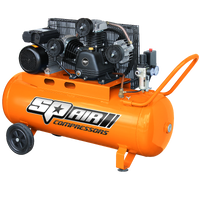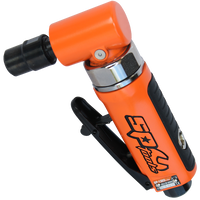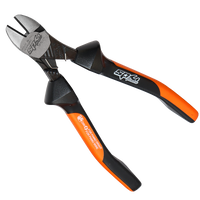Why Buy From Us?
- Australian Owned
- 100% Fitment Guarantee
- Genuine Quality Brands

Shop now. Pay Later. Interest Free.
Make 4 interest-free payments of $44.50 fortnightly and receive your order now. More info

Enjoy Now, Pay Later
Can't Find What You're Looking For?
If you're looking for something in particular, we can help. Drop us a line using the button below.
Submit A RequestWhy Buy From Us?
- Australian Owned
- 100% Fitment Guarantee
- Genuine Quality Brands
Description
V2 FPD: Even after tightened, the newest 8AN ORB dampers (20-0776 and 20-0777), will swivel permiting the vacuum port to be clocked 360 degrees.
The opening and closing of fuel injectors creates pressure pulses in the fuel rail which can lead to unstable fuel pressure. In order to achieve a safe and consistent rail pressure, a fuel pulse damper (FPD) is often necessary. The FPD's internal diaphragm will absorb oscillating pulses and stabilize fuel pressure. This correction can be measured throughout the RPM range and can often help idle surge, especially with high flow injectors. Furthermore, a fuel pulse damper can help solve erratic lean air/fuel ratio spikes, commonly experienced as "stumbling", that are difficult to tune out.
What makes Radium FPDs unique?
Along with having the flexibilty of using common fittings, Radium Engineering FPD's use a vacuum/boost reference port which allows for proper fuel pulse damper performance even at elevated fuel pressures. This becomes essential for boosted systems that use a 1:1 rising rate fuel pressure regulator.
What is the difference between FPD-R and FPD-XR?
The FPD-R (green top) is slightly shorter than the FPD-XR (black top) allowing it to be used in space-contrained applications.
WHICH DAMPER DO I CHOOSE?
The FPD-R (Fuel Pulse Damper-Range) and FPD-XR (Fuel Pulse Damper-Extra Range) both have unique base "static" fuel pressure requirements:
- FPD-R base pressure requirement = 40 - 70psi (static)
- FPD-XR base pressure requirement = 40 - 105psi (static)
Base pressure is the fuel pressure measured when the fuel pump is running WITHOUT a vacuum line connected to the regulator.
IMPORTANT: The ranges above are base static fuel pressures only. Any dynamic fuel pressure created by a rising-rate FPR outside of this range is acceptable, but only when the base "static" fuel pressure is set within these ranges and the vacuum/boost reference line is connected.
Example 1:
- Vehicle: Mitsubishi EVO
- OEM Base Static Fuel Pressure: 43.5psi
- Boost Pressure: 30psi
- Rising Rate Pressure Regulator? Yes
- Can I use a FPD-R? Yes. Even though fuel pressure is 73.5psi at full boost, the FPD-R will work because the base static pressure was set within the 40-70psi requirement. However, the vacuum/boost reference line must be installed.
- Can I use a FPD-XR? Yes. Also, the vacuum/boost reference line does not need to be installed since maximum fuel pressure does not exceed 105psi.
Example 2:
- Vehicle: BMW E46 M3
- OEM Base Static Fuel Pressure: 72.5psi
- Boost Pressure: 20psi
- Rising Rate Pressure Regulator? Yes
- Can I use a FPD-R? No. Base static fuel pressure exceeds the 40-70psi requirement.
- Can I use a FPD-XR? Yes. Also, the vacuum/boost reference line does not need to be installed since maximum fuel pressure does not exceed 105psi.
Specifications
Compatibility
- Universal Part
V2 FPD: Even after tightened, the newest 8AN ORB dampers (20-0776 and 20-0777), will swivel permiting the vacuum port to be clocked 360 degrees.
The opening and closing of fuel injectors creates pressure pulses in the fuel rail which can lead to unstable fuel pressure. In order to achieve a safe and consistent rail pressure, a fuel pulse damper (FPD) is often necessary. The FPD's internal diaphragm will absorb oscillating pulses and stabilize fuel pressure. This correction can be measured throughout the RPM range and can often help idle surge, especially with high flow injectors. Furthermore, a fuel pulse damper can help solve erratic lean air/fuel ratio spikes, commonly experienced as "stumbling", that are difficult to tune out.
What makes Radium FPDs unique?
Along with having the flexibilty of using common fittings, Radium Engineering FPD's use a vacuum/boost reference port which allows for proper fuel pulse damper performance even at elevated fuel pressures. This becomes essential for boosted systems that use a 1:1 rising rate fuel pressure regulator.
What is the difference between FPD-R and FPD-XR?
The FPD-R (green top) is slightly shorter than the FPD-XR (black top) allowing it to be used in space-contrained applications.
WHICH DAMPER DO I CHOOSE?
The FPD-R (Fuel Pulse Damper-Range) and FPD-XR (Fuel Pulse Damper-Extra Range) both have unique base "static" fuel pressure requirements:
- FPD-R base pressure requirement = 40 - 70psi (static)
- FPD-XR base pressure requirement = 40 - 105psi (static)
Base pressure is the fuel pressure measured when the fuel pump is running WITHOUT a vacuum line connected to the regulator.
IMPORTANT: The ranges above are base static fuel pressures only. Any dynamic fuel pressure created by a rising-rate FPR outside of this range is acceptable, but only when the base "static" fuel pressure is set within these ranges and the vacuum/boost reference line is connected.
Example 1:
- Vehicle: Mitsubishi EVO
- OEM Base Static Fuel Pressure: 43.5psi
- Boost Pressure: 30psi
- Rising Rate Pressure Regulator? Yes
- Can I use a FPD-R? Yes. Even though fuel pressure is 73.5psi at full boost, the FPD-R will work because the base static pressure was set within the 40-70psi requirement. However, the vacuum/boost reference line must be installed.
- Can I use a FPD-XR? Yes. Also, the vacuum/boost reference line does not need to be installed since maximum fuel pressure does not exceed 105psi.
Example 2:
- Vehicle: BMW E46 M3
- OEM Base Static Fuel Pressure: 72.5psi
- Boost Pressure: 20psi
- Rising Rate Pressure Regulator? Yes
- Can I use a FPD-R? No. Base static fuel pressure exceeds the 40-70psi requirement.
- Can I use a FPD-XR? Yes. Also, the vacuum/boost reference line does not need to be installed since maximum fuel pressure does not exceed 105psi.
- Universal Part
Best Sellers

ECA2 V2 Ethanol Content Analyzer Kit with Sensor and Gauge (
$601.20
$649.95

ECA2 PnP Harness (WRX/STi 08-14/BRZ/86)
$92.45
$99.95





















































































































